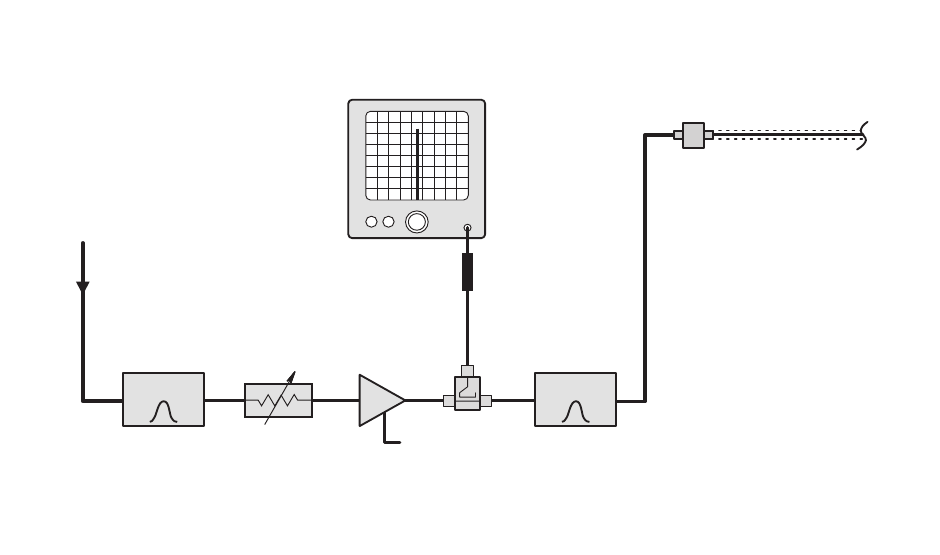User's Manual
Table Of Contents
- Installation and Operation Manual
- Table of Contents
- Introduction
- Installation
- Cautionary Notes
- Pre-RF Connection Tests
- OPERATION
- Signal flow
- System Components
- Field Adjustments
- Maintenance and Repair
- Recommended replacement parts
- Conversion Chart

61-38-05 UserMan page 14 of 38
TXRX Systems Inc. Manual 7-9408-1.2 07/25/05 Page 14
Reduction of Incoming Signal Strength
Reducing the strength of offending signals may
require some or all of the following steps:
a) The addition of extra filtering. Consult TX RX
System's sales engineers for help in this
respect.
b) Modification of the signal distribution layout by
changing the type or location of pickup anten-
nas. This has to be approached in an empirical
way, that is, change-and-try until you get the
desired results. Sometimes changing from omni
to directional antennas will correct the problem.
Setting Signal Booster Gain
The Pre-Installation checks as outlined earlier
should have been performed to determine if gain
reduction will be necessary for your installation.
This can be due to low antenna isolation or exces-
sive input signal levels, or both. The actual amount
of gain reduction is determined by the largest num-
ber required because of either low isolation or
excessive signal levels.
For example, if the results of the isolation measure-
ment indicated the need for a gain reduction of -10
dB but signal level measurements indicate a need
for only a -5 dB gain reduction; then 10 dB is the
number required since both conditions are satis-
fied.
Gain Reduction Methods
As shipped from the factory, the system was setup
for maximum gain. Gain reduction is accomplished
by adding fixed attenuator pads or where even
greater reductions are required by bypassing one
section in a multi-section amplifier stage. Bypass-
ing of amplifier sections is preferred for large gain
reductions so that excessive noise levels are not
produced. Use of attenuator pads alone will reduce
gain but the signal booster will also amplify the
noise generated in the lower level sections.
The addition of attenuator pads may be necessary
in order to achieve the proper signal levels in the
overall communications system. This is quite com-
mon as actual signal losses in a radiating cable
system can vary somewhat from predicted theoret-
ical values. Fine adjustment of gain in communica-
tions systems with cascaded signal boosters can
be very important to keep performance uniform
over the entire length of the system.
Figure 6
shows the use of a spectrum analyzer to
monitor signal levels in a signal booster. The ana-
lyzer connects to the signal sampler on the output
end of the branch to be tested. Attenuation is then
adjusted for the proper signal levels factoring in the
RF from Antenna or
Previous Repeater Amplifier
Signal Distribution System
FilterFilter
DC
Sampler
Variable
Attenuator
Spectrum
Analyzer
10 dB Pad
Amp
Figure 6
: Observing RF power output of a signal booster using a spectrum analyzer.










